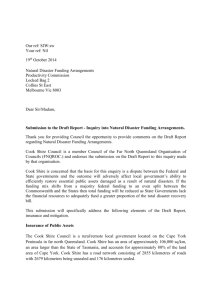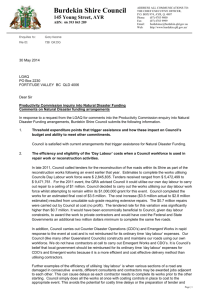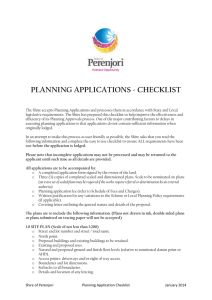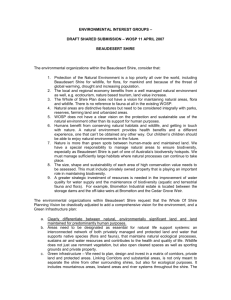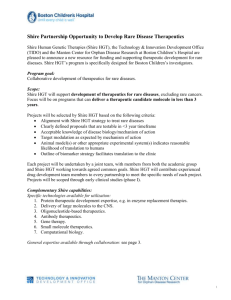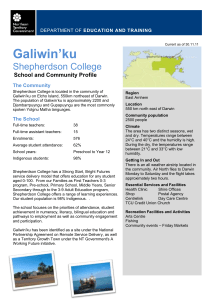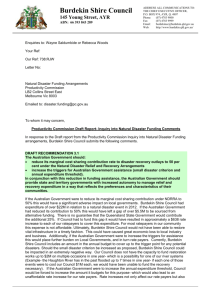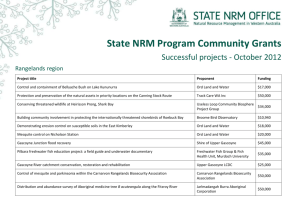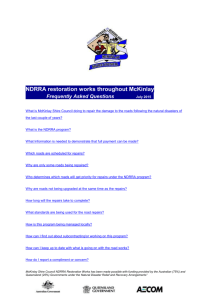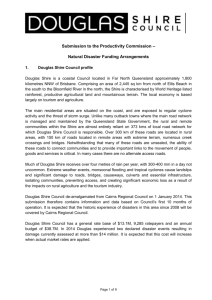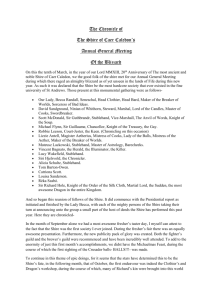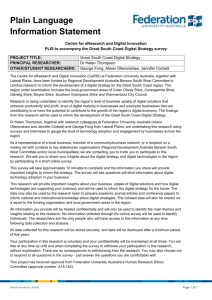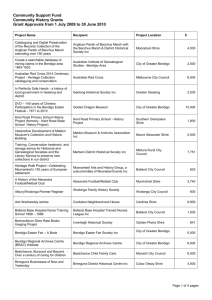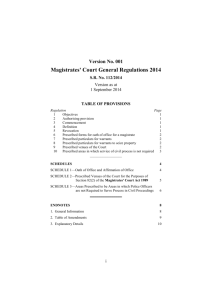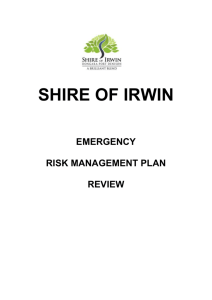Submission 49 - Augusta Margaret River Shire
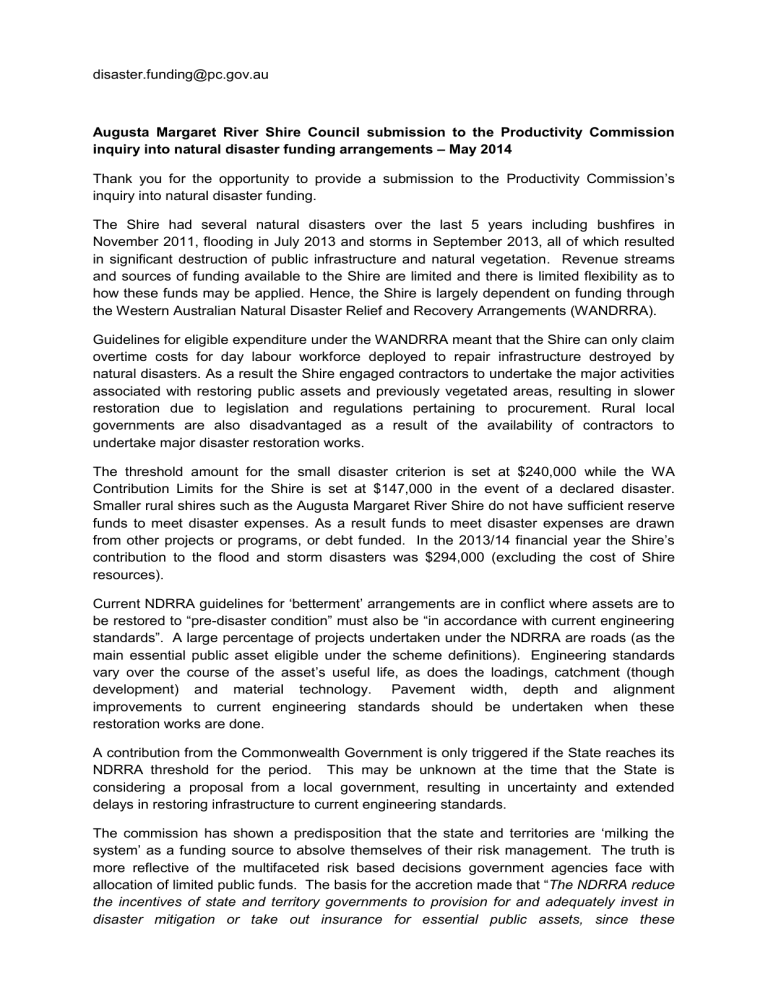
disaster.funding@pc.gov.au
Augusta Margaret River Shire Council submission to the Productivity Commission inquiry into natural disaster funding arrangements – May 2014
Thank you for the opportunity to provide a submission to the Productivity Commission ’s inquiry into natural disaster funding.
The Shire had several natural disasters over the last 5 years including bushfires in
November 2011, flooding in July 2013 and storms in September 2013, all of which resulted in significant destruction of public infrastructure and natural vegetation. Revenue streams and sources of funding available to the Shire are limited and there is limited flexibility as to how these funds may be applied. Hence, the Shire is largely dependent on funding through the Western Australian Natural Disaster Relief and Recovery Arrangements (WANDRRA).
Guidelines for eligible expenditure under the WANDRRA meant that the Shire can only claim overtime costs for day labour workforce deployed to repair infrastructure destroyed by natural disasters. As a result the Shire engaged contractors to undertake the major activities associated with restoring public assets and previously vegetated areas, resulting in slower restoration due to legislation and regulations pertaining to procurement. Rural local governments are also disadvantaged as a result of the availability of contractors to undertake major disaster restoration works.
The threshold amount for the small disaster criterion is set at $240,000 while the WA
Contribution Limits for the Shire is set at $147,000 in the event of a declared disaster.
Smaller rural shires such as the Augusta Margaret River Shire do not have sufficient reserve funds to meet disaster expenses. As a result funds to meet disaster expenses are drawn from other projects or programs, or debt funded. In the 2013/14 financial year the Shire’s contribution to the flood and storm disasters was $294,000 (excluding the cost of Shire resources).
C urrent NDRRA guidelines for ‘betterment’ arrangements are in conflict where assets are to be restored to “pre-disaster condition” must also be “in accordance with current engineering standards”. A large percentage of projects undertaken under the NDRRA are roads (as the main essential public asset eligible under the scheme definitions). Engineering standards vary over the course of the asset ’s useful life, as does the loadings, catchment (though development) and material technology. Pavement width, depth and alignment improvements to current engineering standards should be undertaken when these restoration works are done.
A contribution from the Commonwealth Government is only triggered if the State reaches its
NDRRA threshold for the period. This may be unknown at the time that the State is considering a proposal from a local government, resulting in uncertainty and extended delays in restoring infrastructure to current engineering standards.
The commission has shown a predisposition that the state and territories are ‘milking the system’ as a funding source to absolve themselves of their risk management. The truth is more reflective of the multifaceted risk based decisions government agencies face with allocation of limited public funds. The basis for the accretion made that “ The NDRRA reduce the incentives of state and territory governments to provision for and adequately invest in disaster mitigation or take out insurance for essential public assets, since these
governments do not bear the full cost of rebuilding following a natural disaster ” when
“ commercial insurance for roads is not available” is unfounded.
The reform options have the potential to considerably impact on local government expenditure, especially smaller local governments. The impact could extend to a worst case scenario where funding allocated to a capital works programs may have to be reallocated to fund restoration of essential public assets after a disaster.
The Federal Government must continue to play a role in funding individuals, communities, local and state governments impacted by natural disasters, in circumstances where they are unable to do this themselves.
Any questions regarding the submission above should be referred to the Shire’s Director
Infrastructure Services, Johan Louw.

